Plyometric Exercises for Runners: The What, Why, and How
Adding Plyometrics to Running Routine
If you search google for the best exercises for runners you will get a thousand different ideas and types of exercises. Heck if you search this blog I talk about the best exercises for runners a lot. The key takeaway is knowing what your goal with the exercises is. Plyometric exercises are key for runners to improve performance. Unlike other exercises that I talk about here though they aren’t necessarily key to preventing injury.
Are you looking to take your running performance to the next level? If so, you may want to consider adding plyometric exercises to your routine. Plyometric exercises are a great way to increase strength, power, and explosiveness, all of which are important for runners. By adding these exercises, runners can expect to see an improvement in their speed and overall endurance.
What are plyometric exercises?
So, what are plyometric exercises? Plyometrics is defined as the ability to move quickly due to the rapid stretching and contracting of your muscles. Take a look at our previous article on flexibility and why it might not be as important for runners. When your muscles are able to rapidly stretch and contract, this leads to an increase in power. As a result, you’ll be able to run faster and further with less effort.
Plyometric exercises are often referred to as ‘jump training’ or ‘explosive training’ as they train your body to produce quick, explosive movements. These types of exercises are often used by athletes in other sports such as basketball, football, and soccer. However, they can be just as beneficial for runners looking to improve their performance.
Plyometric exercises are movements that place a high level of stress on the muscles and require a rapid eccentric (muscle lengthening) contraction followed by a concentric (muscle shortening) contraction.
The benefits of plyometric exercises for runners
There are many benefits that plyometric exercises can offer runners. As we mentioned earlier, plyometric exercises can help to increase your speed and endurance. Through complex training programs, strength and plyometric training, we can improve the force our muscles and bodies are able to produce. Therefore, increasing our speed and endurance.
Plyometrics benefit our Running Economy
A recent study showed they can also help to improve your running economy. Running economy is a measure of how much oxygen you use while running at a given pace.
The more efficient you are, the less oxygen you’ll need to run at the same pace. As a result, you’ll be able to run for longer and at a faster pace.
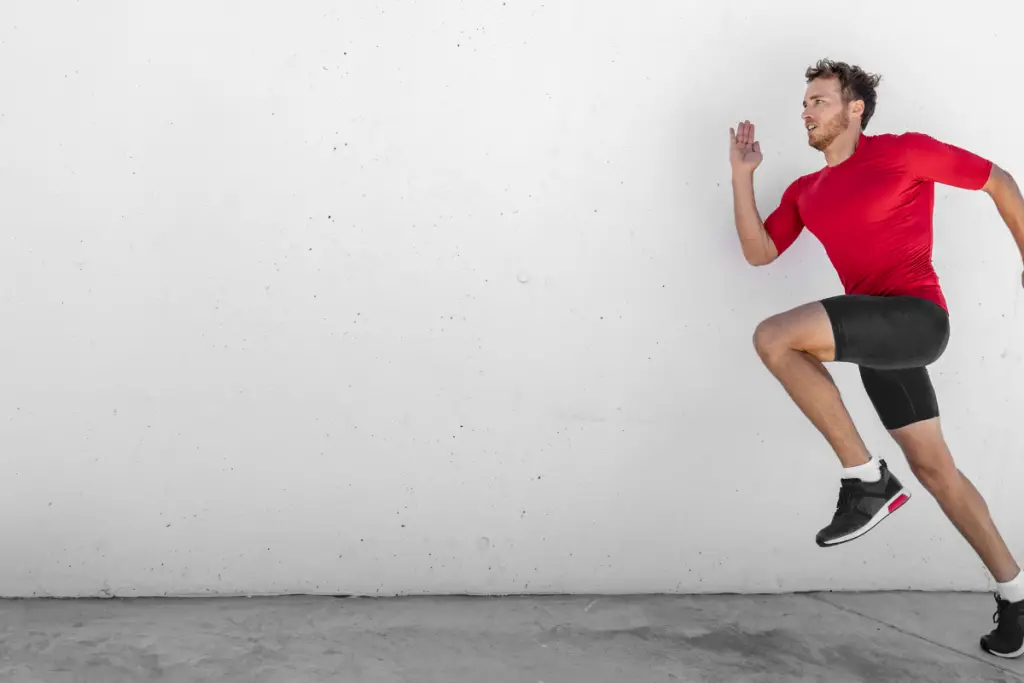
Improved running economy means more distance traveled at a given speed with less oxygen consumption, improving your entire running performance.
Plyometrics for Injury Prevention in Runners
Injury prevention is always a key in our articles here at The Runner Doc. I know that I said that plyometrics aren’t the first line of defense against injuries, which I stand by, they are still beneficial to preventing injuries.
Plyometric exercises help prevent injuries by increasing the stiffness of the muscle-tendon system. This is huge as we get into master’s age groups and the muscle-tendon system becomes less stiff. Plyometrics can help prevent this from happening and enable those master’s athletes to stay injury-free when running!
This is not only a benefit for the master’s athlete but for those in all age groups as well!
Increase in muscle strength. We have talked before about how being strong and strength training is key to preventing injuries. Plyometrics is a form of strength training and will contribute to injury prevention.
How to Add Plyometric Exercises to Your Running Routine
Now that we know what plyometric exercises are and the benefits they can offer runners, it’s time to look at how to add them to your routine.
Plyometric exercises should be added slowly and gradually to allow your body to adapt. These exercises place a high level of stress on the muscles and connective tissue and as a result, you’re at a higher risk of injury if you do too much too soon.
Start by adding one plyometric exercise to your routine 1 time out of your weekly 2-3 strength training sessions. As your body adapts and becomes stronger, you can gradually increase the number of exercises and the frequency with which you perform them.
It’s also important to focus on quality over quantity. Rather than trying to do as many reps as possible, focus on performing each exercise with proper form and technique. This will help you to get the most out of the exercises and reduce your risk of injury.
Best Plyometric Exercises for Runners to Perform
Not all plyometrics are created equally. There are much more advanced exercises and then the beginner ones. Advanced are typically going to be single leg exercises. I have included a variety of options that are great for runners both advanced and beginner level. However, this list is in by no ways exhaustive and there are other great options out there too!
Here are some of the best plyometric exercises for runners to perform:
1. Box Jumps: Box jumps are a great way to increase lower body power and explosiveness. Start by standing in front of a box or step that is around knee height. From here, bend your knees and jump onto the box, landing with both feet on top. Step back down and repeat.
2. Depth Jumps: Depth jumps are similar to box jumps, but instead of jumping onto a box, you will be jumping off of one. Start by standing on top of a box or step that is around knee height. From here, jump off the box and land with both feet on the ground. Immediately jump back up onto the box and repeat.
3. Squat Jumps: Squat jumps are another great exercise for increasing lower body power. Start by standing with your feet shoulder-width apart. From here, bend your knees and lower into a squat position. Jump up into the air and land back in the squat position. Repeat.
4. Broad Jumps: Broad jumps are a great way to increase horizontal power and explosiveness. Start by standing with your feet shoulder-width apart. From here, bend your knees and jump forward as far as you can. Land with both feet on the ground and repeat.
5. Skips: Skips are a great plyometric exercise for runners as they help to improve running economy and coordination. Start by standing on one leg and bringing the opposite knee up towards your chest. From here, jump forward and land on the same leg that you started on. Immediately bring the other knee up and repeat.
6. Jump lunges: Jump lunges are a great exercise for runners as they help to improve lower body strength, power, and coordination. Start by standing with your feet shoulder-width apart. From here, take a large step forward with one leg and lunge down, keeping your front knee over your ankle. Jump up and switch legs in midair, landing with the opposite leg in front. Repeat.
7. Single Leg Pogo Jumps: Single leg pogo jumps are a great plyometric exercise for runners as they help to improve single-leg power and coordination. These are great for achilles tendon stiffness and calf strength! Start by standing on one leg. From here, jump up and down, keeping your balance on the one leg. Repeat for 30-60 seconds before switching legs.
Tips for Safe and Effective Performance of Plyometric Exercises
Remember that it is important to keep your ground contact time short when doing plyometrics to get the most benefit out of them.
For example, with jump lunges, keep the phase when both feet are on the ground and your knees are bent as short as possible. If you hold this position for too long you will lose the energy transfer and recoil that we are producing.
These exercises are very energy-intensive and fatiguing due to requiring high levels of effort and force. You should only be able to do 1-5 repetitions for 3-4 sets at a time in the beginning.
As your muscles adapt, you can increase the number of repetitions and sets that you perform.
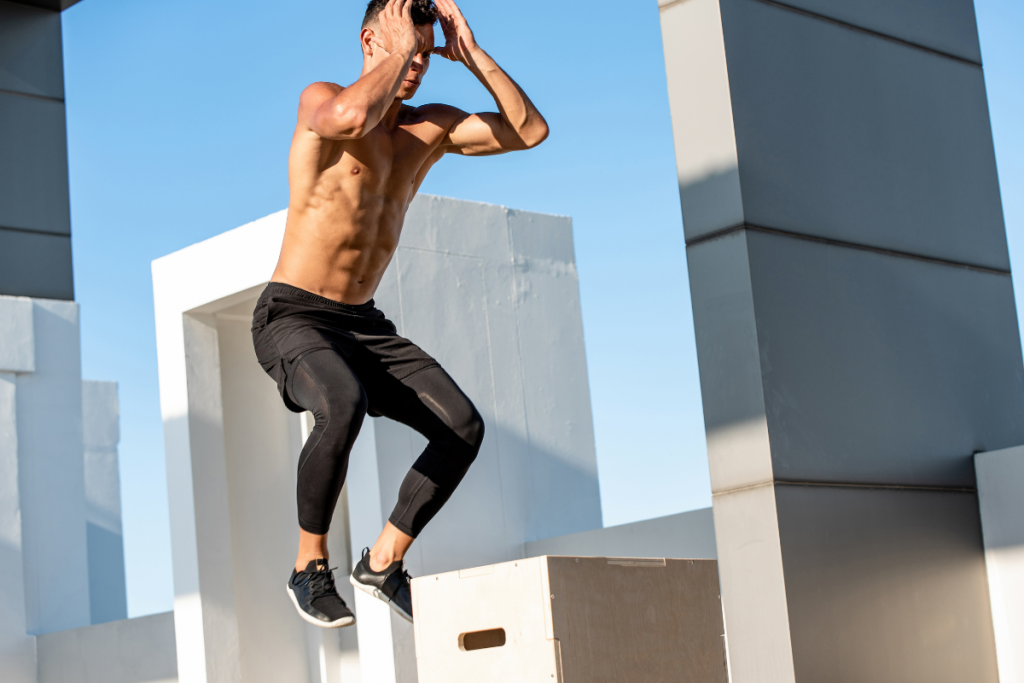
Plyometric exercises are powerful and effective, but they can also be dangerous if not performed properly. Make sure that you warm up thoroughly before starting and listen to your body – if something doesn’t feel right, stop.
If you are new to plyometrics, it is best to start slowly and progress gradually. Adding too much too soon can lead to injuries. Work with a qualified coach or trainer to make sure that you are performing the exercises correctly and progressing safely.
Final Thoughts on Plyometrics for Runners
Plyometric exercises are a great way to increase strength, power, and explosiveness – all of which are important for runners. By adding these exercises to your routine, you can expect to see an improvement in your speed, agility, and overall endurance. Just remember to start slowly and progress gradually to avoid injuries. Happy training!
Related Articles to Plyometrics for Runners
- Must Do Single Leg Exercises for Faster Running: The Best Way to Improve Your Speed and Endurance
- How Does Cross-Training Prevent Injuries in Runners?
- Is Rowing the Best Crosstraining for Runners?
– – – Ad – – –
Have you been struggling to get a strength training program scheduled to go with all your running? Do you know that you need to strengthen in order to prevent injury as well as improve your times?
Check out my Run Strong Program.
A strength program designed by a Physical Therapist specifically for runners. It is customizable and repeatable to use over and over again and continue to see progress!
The phases of the program are periodized to match and complement any running training program from short distances to marathons and beyond!
The best part? You get lifetime access to it for only $30.
The only remaining question is….what are you waiting for?! Help yourself become the best and strongest runner you can by adding in strength training today!
– – – End of Ad – – –
AFFILIATE DISCLOSURE
As an Amazon Associate, I earn from qualifying purchases. This post may contain affiliate links. If you use these links to buy something we may earn a commission. The Site may contain links to affiliate websites, and we receive an affiliate commission for any purchases made by you on the affiliate website using such links.
All information should be used as a tool for more knowledge on the subject topic, to use as references for later articles where applicable, or just to keep it in mind during future exercise routines or activities.
This article is not meant to give medical advice or to replace professional health care. Should any ailment occur please contact your doctor or physical therapist immediately to keep yourself safe and prevent further damage.
The author is not liable for any personal or commercial damage directly or indirectly related to the content hereof. You are responsible for adhering to local laws and regulations regarding health & safety, including proper use of equipment or safety gear, and compliance with governing healthcare associations, and state, and federal regulations.
References for Plyometric Exercises for Running
Balsalobre-Fernández, C., Santos-Concejero, J., & Grivas, G. V. (2016). Effects of strength training on running economy in highly trained runners: a systematic review with meta-analysis of controlled trials. Journal of strength and conditioning research, 30(8), 2361-2368.
Barnes KR, Kilding AE. Strategies to improve running economy. Sports Med. 2015 Jan;45(1):37-56. doi: 10.1007/s40279-014-0246-y. PMID: 25164465.
Hreljac, A. (2004). Impact and overuse injuries in runners. Medicine and science in sports and exercise, 36(5), 845-849.
Yamamoto, Linda M; Lopez, Rebecca M; Klau, Jennifer F; Casa, Douglas J; Kraemer, William J; Maresh, Carl M The Effects of Resistance Training on Endurance Distance Running Performance Among Highly Trained Runners: A Systematic Review, Journal of Strength and Conditioning Research: November 2008 – Volume 22 – Issue 6 – p 2036-2044 doi: 10.1519/JSC.0b013e318185f2f0
Spurrs RW, Murphy AJ, Watsford ML. The effect of plyometric training on distance running performance. Eur J Appl Physiol. 2003 Mar;89(1):1-7. doi: 10.1007/s00421-002-0741-y. Epub 2002 Dec 24. PMID: 12627298.
Houghton, Laurence A.; Dawson, Brian T.; Rubenson, Jonas Effects of Plyometric Training on Achilles Tendon Properties and Shuttle Running During a Simulated Cricket Batting Innings, Journal of Strength and Conditioning Research: April 2013 – Volume 27 – Issue 4 – p 1036-1046 doi: 10.1519/JSC.0b013e3182651e7
Ramírez-Campillo, R., Álvarez, C., Henríquez-Olguín, C., Baez, E. B., Martínez, C., Andrade, D. C., & Izquierdo, M. (2014). Effects of plyometric training on endurance and explosive strength performance in competitive middle-and long-distance runners. The Journal of Strength & Conditioning Research, 28(1), 97-104
Why Runners Need to do Plyometrics
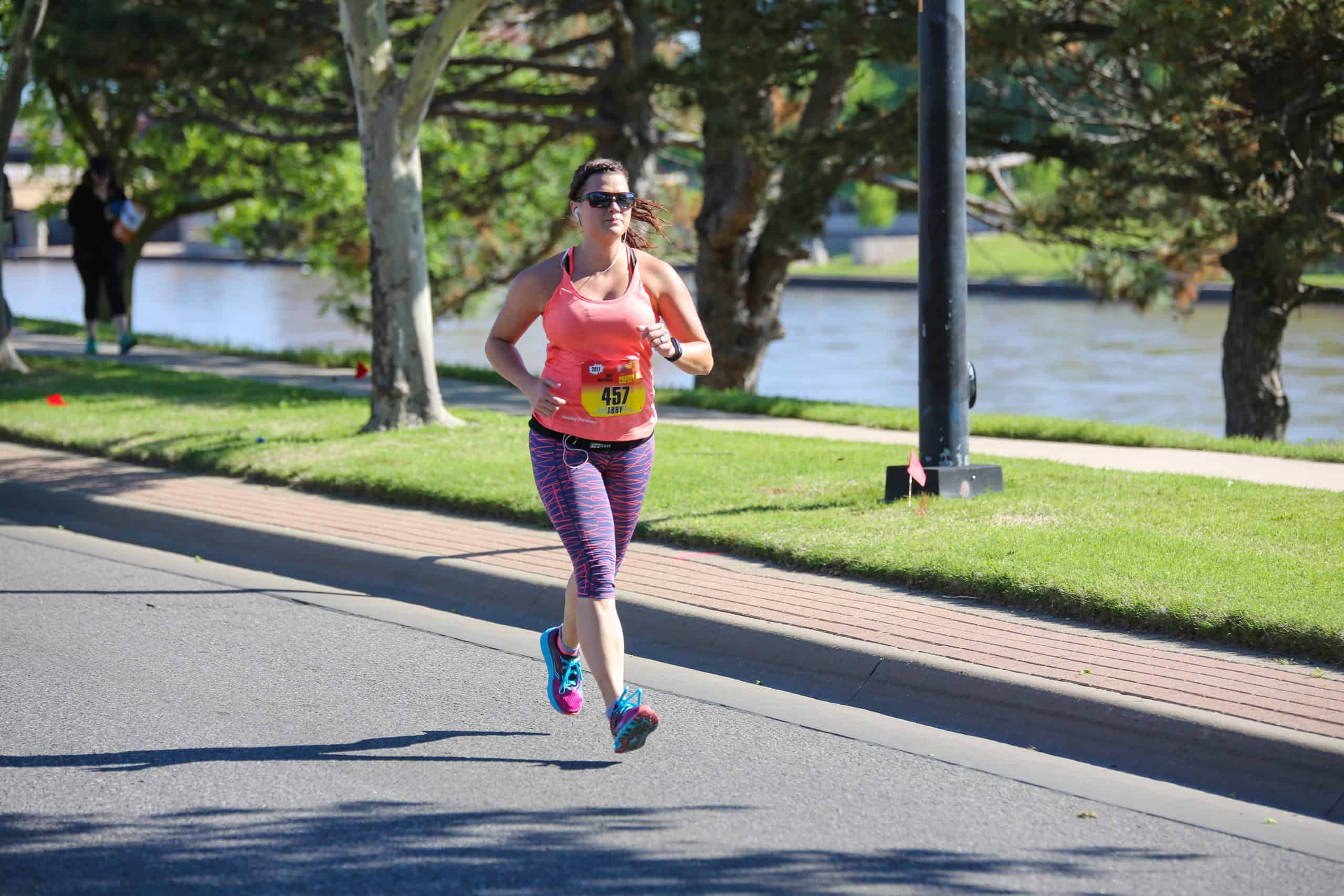
Dr. Abby Siler, PT, DPT is a Physical Therapist with 10 years of experience in a variety of settings. She has spent the majority of her time treating athletes in orthopedic clinics and worker’s compensation cases. She is a runner herself for the past 15 years and a lifelong athlete. Dr. Abby loves to teach runners how to stay injury free and out of her clinic.



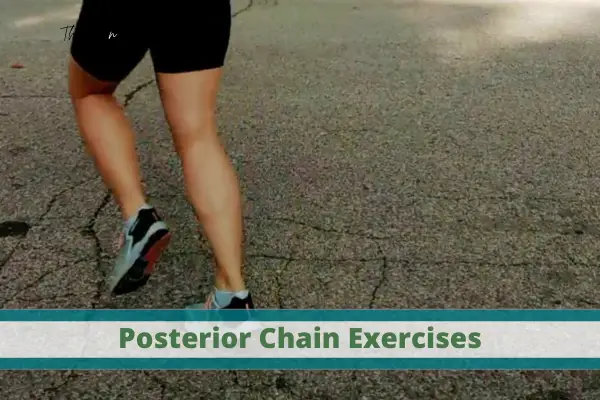
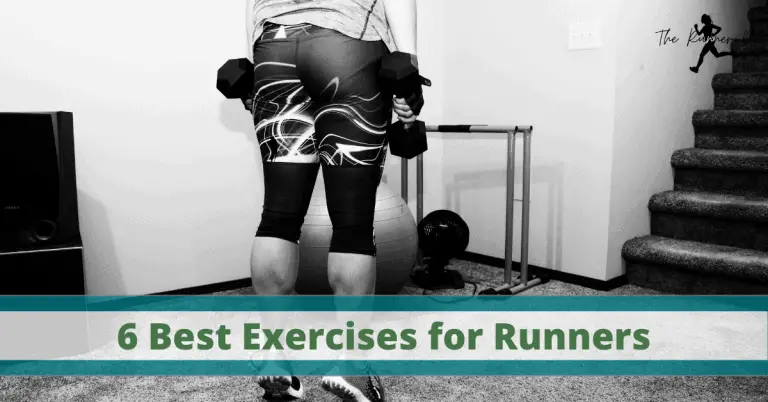
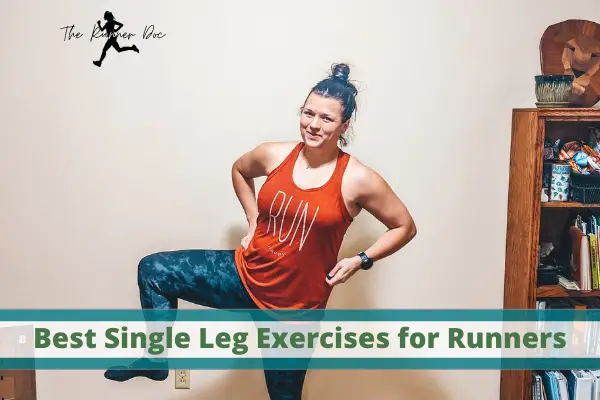
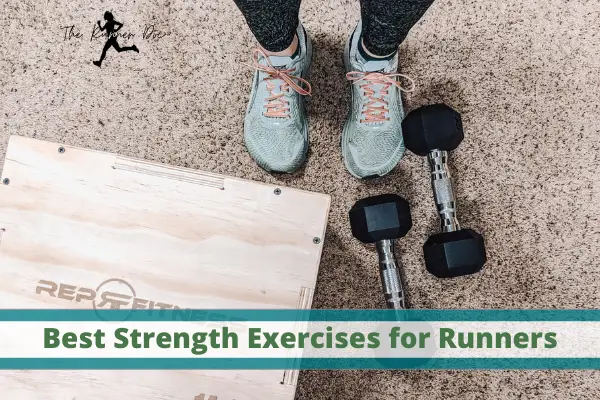

2 Comments